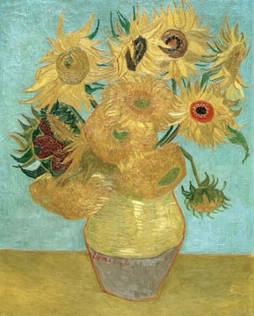FOR IMMEDIATE RELEASE
ACS News Service Weekly PressPac: November 14, 2012
Preserving van Gogh's priceless masterpieces
The chrome yellow pigment that renowned post-Impressionist artist Vincent van Gogh favored in priceless masterpieces like Sunflowers, the Yellow House and Wheatfield with Crows is especially sensitive to certain types of light and should be protected to prevent darkening. That’s the conclusion of a series of studies in ACS’ journal Analytical Chemistry, which could help preserve masterpieces by van Gogh and contemporaries like Gauguin, CÉzanne and others.
Koen Janssens and colleagues explain that the chrome yellow pigment used by van Gogh and others in the 19th and 20th centuries is especially susceptible to darkening. For example, what was once a vibrant yellow sunflower might appear brown and muddied a century later. In previous research in Analytical Chemistry, the scientists found that this alteration is at least partially due to a change in the oxidation state of the chromium in this type of pigment over time. In the current work, they wanted to determine the color change effects of shining different types of light on the yellow pigment.
They conducted laboratory tests with lab-made pigments that were similar in composition to pigments that van Gogh used, as well as a historical paint sample from Rik Wouters, a Belgian artist active in the late 1800s/early 1900s. Those chrome yellow paint samples that also are rich in sulfates were highly susceptible to browning, especially in regular, UV and blue light. The researchers suggest that to prevent darkening, art collectors and gallery owners should minimize their paintings’ exposure to light in the blue/violet/ultra-violet range.
The authors acknowledge funding from ESRF; the Interuniversity Attraction Poles Programme – Belgian Science Policy; the Research Fund of the University of Antwerp, Belgium; FWO; the European Union FP7 program CHARISMA and MIUR.
![]()
Contact
Science Inquiries: Michael Woods, Editor, 202-872-6293
General Inquiries: Michael Bernstein, 202-872-6042

like Vincent van Gogh’s Sunflowers, above, stay
out of some kinds of light.

